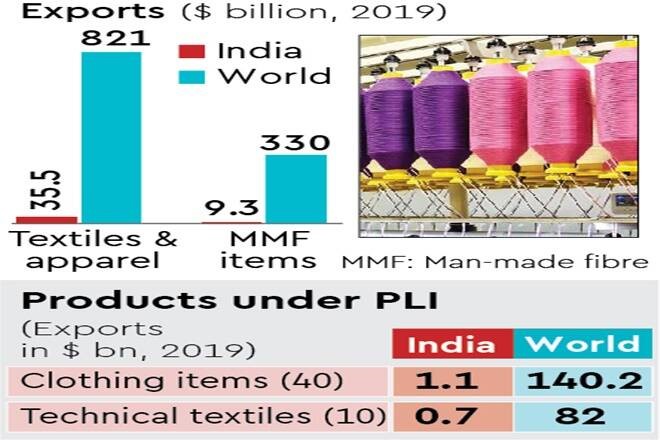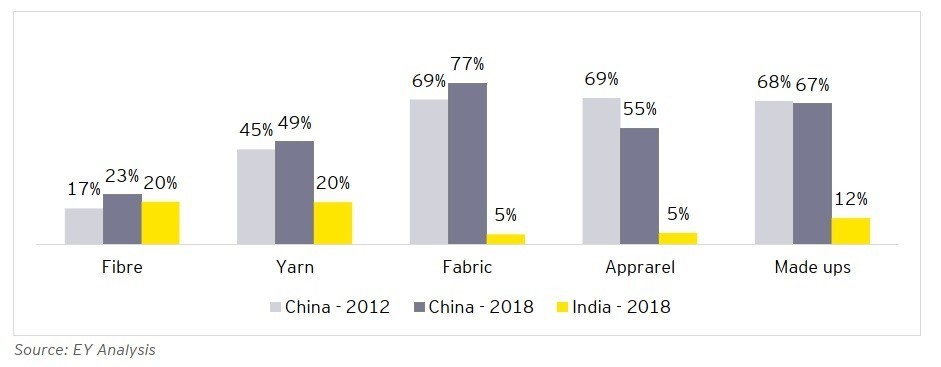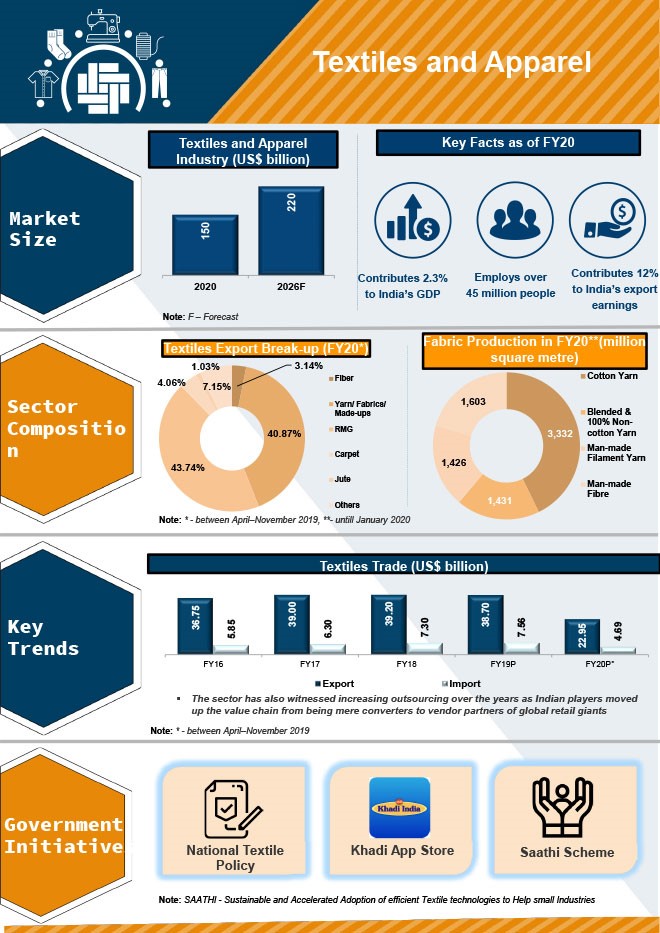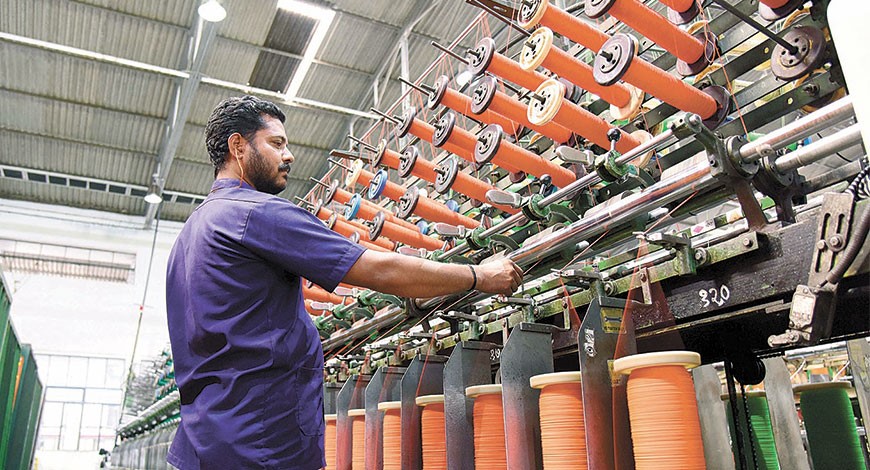Production Linked Incentive for Textile
Figure 1: No Copyright Infringement Intended
Context:
- Government has approved a Rs 10,683 crore production-linked incentive scheme for the textiles sector.
Details of the Scheme:
- This scheme will provide incentives to companies that produce more than 50 man-made fibre textiles and fabrics, as well as some technical textile items.
- The scheme is for two types of investments.
- The first entails a minimum of ₹300 crore in plant, machinery, equipment and civil works in a unit that must register a minimum turnover of ₹600 crore once it commences operation.
- The second is for a minimum of ₹100 crore, where the business achieves a minimum turnover of ₹200 crore..
- It will decline by one percentage point each year until it is phased out after the fifth year, but it will be tied to incremental turnover.
- The product lines include 40 in man-made fibre apparel, 14 in man-made fibre fabrics, and 10 technical textile segments/products.
- Priority will also be given to investment in aspirational districts, Tier-3, Tier-4 towns, and rural areas.
Reason behind Focus on Man -Made Fibre:
- Currently, Indian production and export of textile and clothing products are largely cotton-based.
- In 2018-19, while Indian textile and clothing exports amounted to about $36 billion, less than one-third was man-made fibre-based.
- Increase the Share of Man-Made Fibre: of the total global fibre manufacturing and consumption, 70% is man-made fibre-related, while in India it is just about 35%.
- Annual textile and clothing exports have remained largely stagnant over the last seven years, and stuck in the range of $30 billion-$35 billion.
- To Tackle the Competition: In recent years, countries including Bangladesh and Vietnam have gained a sizeable share in the man-made fibre segment of the global textile trade, making it all the more vital for India to provide policy support to ensure the country remains competitive internationally.
- Cut Down on Imports: With the government recently removing the anti-dumping duty on viscose staple fibre and Purified Terephthalic Acid, most man-made fibre is now available in India at internationally competitive prices. With an incentive to invest in production too, Indian manufacturing of man-made fibre value-added products is expected to increase and thus bring down imports.
Impact on Traditional fibres:
- It has minimum investment thresholds and select product lines and hence targets a limited number of players.
- The traditional segments have a large number of industries spread across micro, small and medium enterprises and large-scale operations. They will continue to invest and grow in the fields they are strong in.
Benefits from the Scheme:
- the initiative would prioritise institutions that set up shops in underserved areas and create more jobs.
- The government expects new investments of Rs 19,000 crore over the next five years, resulting in a total turnover of Rs 3 lakh crore and extra employment prospects for nearly 7.5 lakh people.
- The goal is to boost India's participation in man made produced fibres which is now less than 3 per cent.


Shortcoming of the Scheme:
- Limited product coverage: The proposed list of products covers only the apparels and not the fabric which is still majorly imported. The scheme doesn't cover synthetic fabrics such as viscose, polyester and nylon, which is a major input for apparels covered under the scheme.
- In the Technical textiles, a proper boost to the same can be provided only by encouraging investments in the fibres and filaments used for producing the end products like safety air bags in cars, diapers, sanitary napkins, surgical materials etc. Merely including the end-product may not enable more investments in this sector.
- Each process of the manufacturing is done by multiple players in India. Therefore, the condition of investing Rs 500 Crore for greenfield investment seems very difficult to achieve and clearly seems that this condition should be eased out the way it has been done for some other sectors.
- It would be difficult to maintain a growth pattern of 50% on a year-on-year basis which would involve more investment in terms of machinery and capturing more market in given time. This is far more than what is envisaged for the PLI schemes of any other sector.
Other Steps taken:
- 100% FDI (automatic route) in the textile and apparel sector in India. FDI in the textiles and apparel industry has reached up to $3.74 bn during 2021.
- India has removed the anti-dumping duty on Purified Terephthalic Acid (PTA), a key raw material for the manufacture of manmade fiber and yarn.
Textile Sector of India:





1.png)
